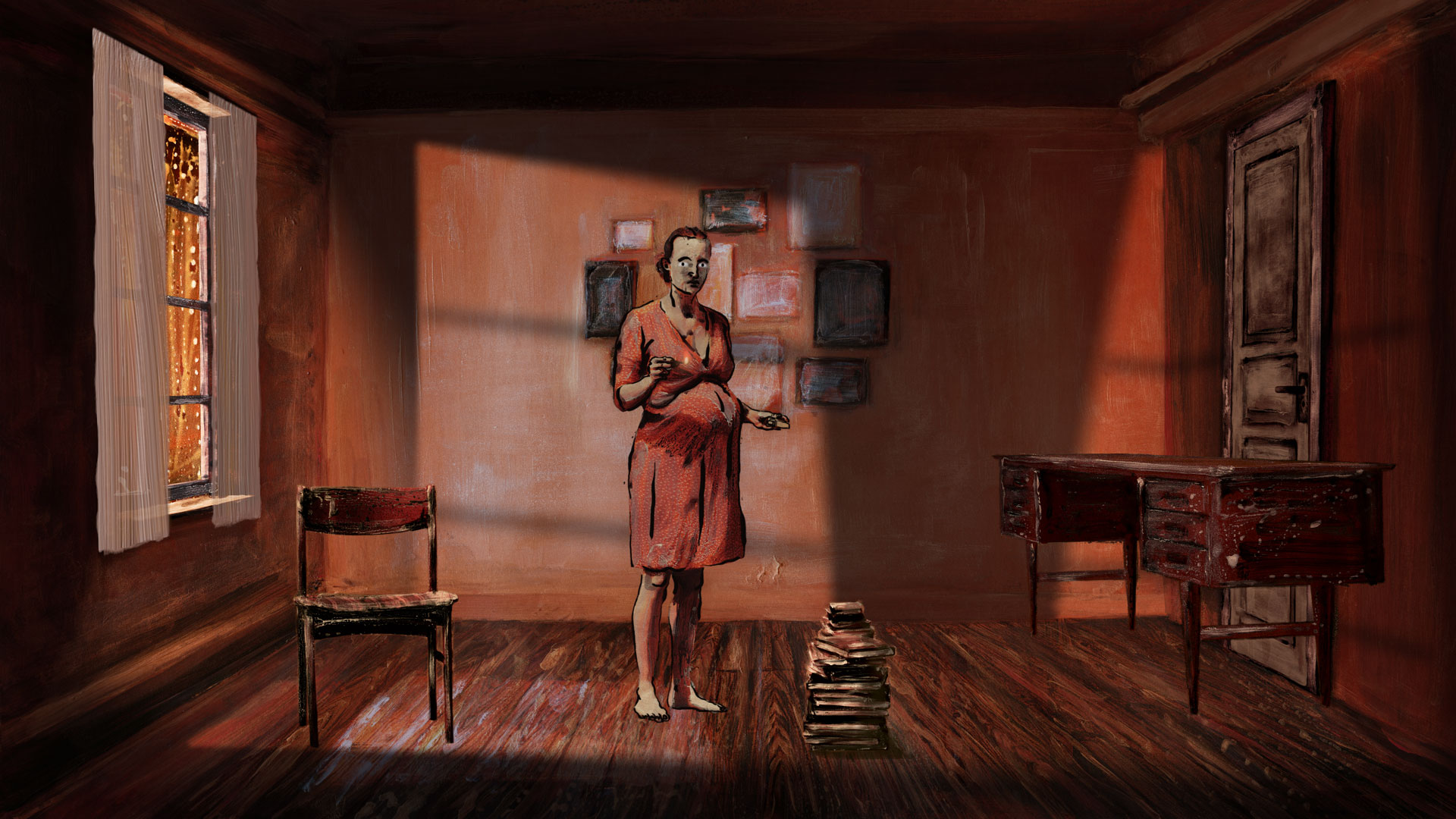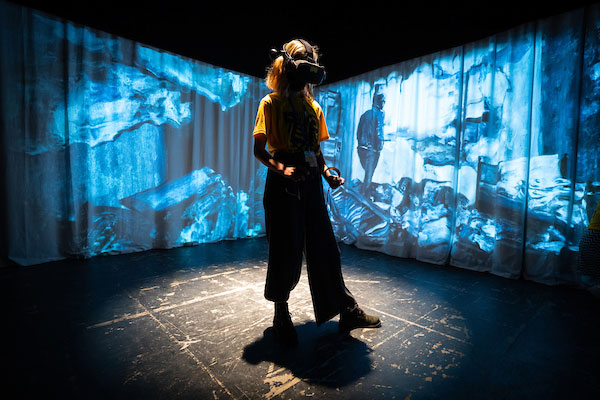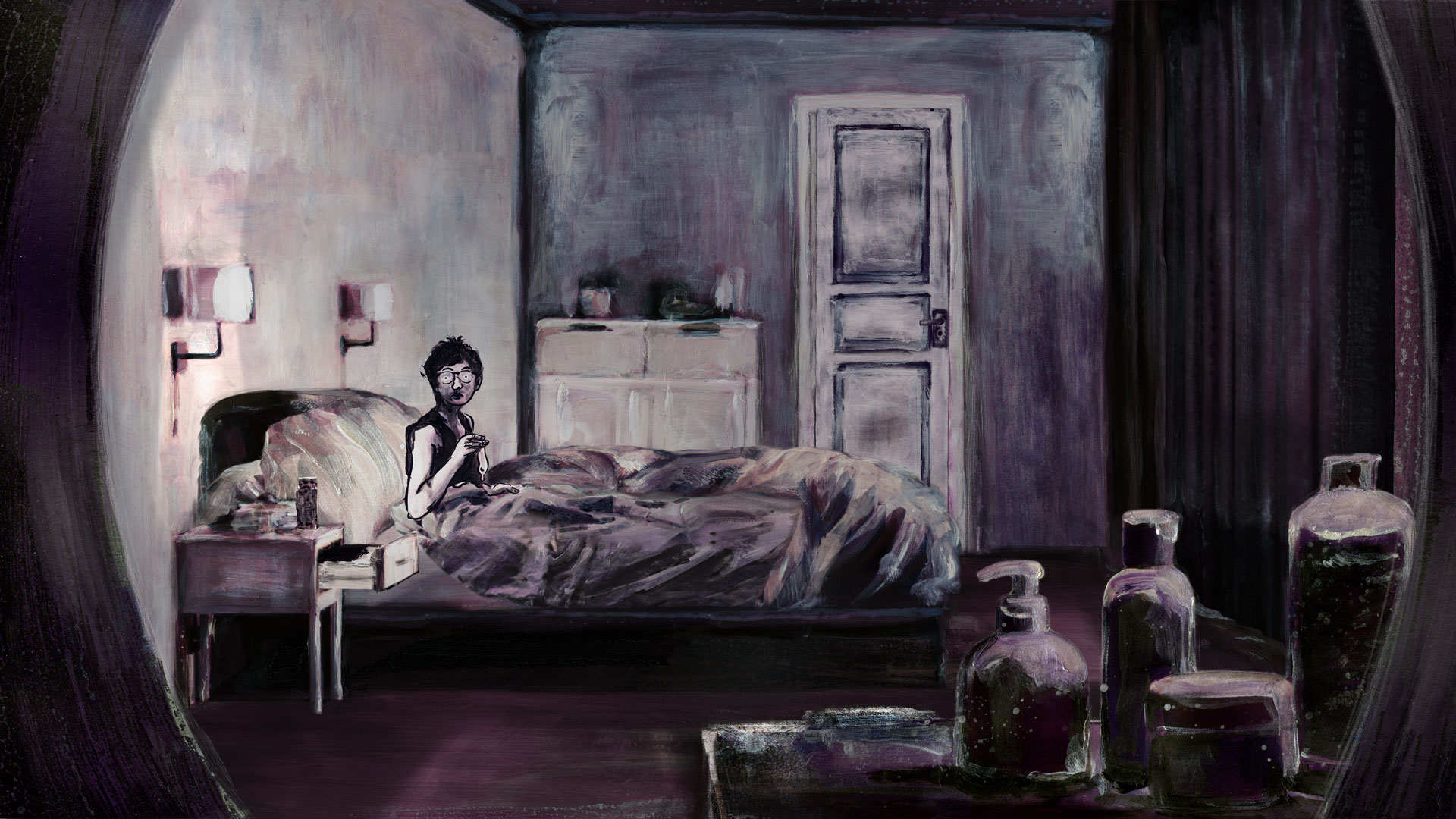“I want to see this type of work in libraries, museums, and art galleries”
Expanding the boundaries of VR and animation with The Hangman at Home

MEDIA AND THE MESSAGE
In many ways, the Carl Sandburg poem The Hangman at Home is the perfect subject for Michelle and Uri Kranot. The poem is about exclusion, about things left unsaid, about stories that aren’t told. Thus it naturally raises questions about who gets to tell stories, about which voices are heard and which are left out. These themes dominate the life, work, and mission of the Denmark-based filmmaking duo, so they kept the poem in their “idea drawer” for over a decade, waiting for the right time to bring it to life.
In 2017, the time had come. Michelle and Uri wanted to continue the kind of themes, messages, technologies, and techniques they had been working with in their 2017 film Nothing Happens. They received the rights to use the poem from the estate of Carl Sandburg, and teamed up with producer Lana Tankosa Nikolic of Late Love Production. The project was co-produced by The National Film Board of Canada, Miyu Productions, and Floréal Films. It has also received support from the Danish Film Institute, the West Danish Film Fund, the CNC (Centre national du cinéma et de l’image animée), Région Nouvelle-Aquitaine, Charente county council (as part of Pôle Image Magelis) and The Animation Workshop.
In 2020, The Hangman at Home VR won the top prizes at the 77th Venice Film Festival, the Cannes XR awards, and New Images, along with being accepted at Annecy, IFFR, and other prestigious festivals. The Hangman at Home short film has appeared at Anibar, Animafest Cyprus, and the LA Shorts International film festival, winning the grand prize for Best Short Film at the Krakow Film Festival. Around the world, the project has been praised by audiences and critics alike, but the multiple media components have seldom appeared together, as a single project.


Photo curtsey of Viborg Animation Festival
A SINGLE STORY WITH MULTIPLE VIEWPOINTS
Like Nothing Happens, The Hangman at Home is a multi-media, multi-channel experience. It consists of a short film, a single-user VR experience, and a multi-user VR experience. There is even an AR gallery experience that showcases dioramas from the film. These expressions can all be experienced independently or consecutively, in any order. Each experience complements and augments the others, shifting the perspective of the viewer, revealing new and different interpretations of the work.
In fact, this very multiplicity and complexity makes the project difficult to describe. We are so accustomed to describing media projects in the terms of the technologies used to display them. Current language like “multimedia experience” doesn’t really encapsulate the variety of experiences available within the single project, and many distribution channels are more interested in one type of media than in others. While more and more “film” festivals are including VR experiences, for example, many festivals have accepted The Hangman at Home as only a single channel experience, rather than a comprehensive multi-channel project. In the interest of including more artists and more projects, they often prefer to include this project in only one media format.
However, the advantage of experiencing The Hangman at Home in multiple media formats isn’t simply the shift in viewer perspective, and the resulting personal impact. As Michelle Kranot points out:
“Part of how you interpret media is dependent on the context. When you are in a darkened theater with an audience, you have a very different experience than when you are at home alone watching a film on your laptop. Likewise, the single-user and multi-user VR experiences of The Hangman at Home are extremely different from watching the film, because you are either alone with your feelings and reactions, or having a shared experience with others. There is always another way of being in the story.”
Because this project is about accountability and responsibility, and meant to provoke the audience to ask questions of themselves, the experience of shifting perspectives and shifting contexts is profound. Each story segment includes a moment of reckoning between the subject and the viewer, a moment where the observer is themselves observed, and the characters look at the audience in a prolonged moment that is so riveting, and yet so ambiguous, that it leaves you wondering what exactly happened. And what exactly happened to you.
THE LAYERS AND COMPLEXITY OF CREATING ART IN VR
Building on the techniques used in the visuals of Nothing Happens, the animation in The Hangman at Home was created by filming actors performing in masks and costumes. Then the Kranots digitally manipulate the images, then print them out, paint over them, and then photograph the paintings for compositing. This way of animating creates a rich texture, where you can see every brushstroke. It’s a painstaking method that looks beautiful, while also heightening the ambiguity of the character’s behaviors and motivations.
Director Uri Kranot composed the score for the film, integrating the score and sound from the very beginning of the production along with the storyboards and animatics. Because they were created at the same time, the music drives the look as well as the pacing of the film, rather than simply reflecting it. That co-development process means that, like every other aspect of the project, the music is embedded in the meaning and the message of the experience, enhancing the emotions of the moment.
The VR version of The Hangman at Home has a lovely musical interlude moment, in which the combination of a responsive and interactive piano, along with the ambient score, work surprisingly well together. This interactive soundscape was created by Milan Grajeski, with a musical arrangement by Thomas Richard Christensen and sound design by Pierre Yves Drapeau, so that the improvisational contributions of the audience add to the haunting ambience of the moment.
The film and VR experiences were developed simultaneously. According to Lana Nikolic, when you produce the different media channels concurrently, it makes the entire production more cost-effective and ensures that each media channel provides a unique experience for the audience, whether they encounter them separately or together. When you develop a story for one distribution channel, and then try to adapt it for another, it adds cost and often doesn’t enhance the experience for the viewer. Lana says:
“It only works if you plan for it from the very beginning. You have to have both the film and the VR in mind from the start and have a story you want to tell, so that you create equally engaging experiences for both channels, and what you make works just as well for both audiences. Of course, funding doesn’t work that way: you get one type of funding for one channel, and another type for another channel, because that’s how film funds work. But it is almost impossible to keep the budgets separate when you are developing for both channels at the same time and will be sharing assets and sequences between them.”
As any student of filmmaking knows, editing is absolutely critical in storytelling, and it is especially noticeable and significant in The Hangman at Home. Because the VR and film experiences are structured differently, and because timing and pacing in VR is somewhat dependent on the user behavior, editing decisions become incredibly meaningful and significant. The ways in which the different Hangman at Home experiences are structured differently is one of the key reasons why each channel is worth experiencing, and each experience enhances the others.
From a technical standpoint, this ability to shift context, perspectives, and structure between the different experiences of The Hangman at Home would be incredibly informative for students and scholars of film and animation. The way that every experience provokes different emotional responses, and raises different questions of identity and responsibility, may inform how other filmmakers choose to tell their own stories and communicate their own messages.
The Hangman at Home, in one or more of its iterations, continues to enjoy a hugely successful festival season in 2021. But the goal is to someday move beyond film festivals and make these types of projects more accessible. Right now, VR technologies are still difficult to widely distribute. You can’t simply send a file to a library, for example, and expect them to know how to set up the experience and make it work correctly. Over time, as these technologies become more familiar, more available, and more standardized, it will be easier to share experiences more broadly, in more locations, with more diverse audiences. The Hangman at Home team has bigger ambitions for a long-term lifecycle of these types of projects. Instead of simply appearing in a season of festivals, they want their work to have a longer life in the community. Lana says:
“I want to see this type of work in libraries, in museums, in art galleries. After all, the taxpayer funds these projects. They should get to enjoy them.”
While many of these technologies are still in their infancy, we can expect that immersive VR will become more and more accessible in future years. These new distribution methods may also revise the current model where films are constantly “competing” against each other in the context of festivals. The future holds tremendous opportunities for creating more diverse content and reaching more diverse audiences.

THE FUTURE AMBITIONS OF LANA AND THE KRANOTS
This unique process of concurrent film and immersive experiences is integral to the future work, questions, and explorations that the Kranots and the team at Late Love Production continue to pursue.
Michelle and Uri are continuing their ongoing work with Anidox and The Animation Workshop, as well as engaging in research related to animation, VR, and immersive experiences. The incredibly prolific pair are also early in production on an animated feature, and are making another short animated film “just for fun.”
Lana and Late Love Production are currently working on several exciting projects, but one ambitious project really stands out. Their groundbreaking 3 Kings experience is being created in collaboration with White Hole Theater and Viborg Municipality. The massive project combines live performance, screen projections, and VR to create a unique immersive experience. It will be launched in several phases in Viborg over the next few years, culminating in a massive immersive experience in 2024.
For so many years, the media has been the message. For the Kranots, Lana Tankosa Nikolic, and a new generation of creators, the message is bigger than the media. The language of criticism, the processes of funding and distribution, and the habits of festivals and platforms, need to embrace the challenges and opportunities of multi-channel artworks like The Hangman at Home.
Credits
Collaborators

WeAnimate Magazine is dedicated to all the people who animate and make things, lines, and ideas come to life.
WeAnimate ApS is founded and owned by The Danish Animation Society (ANIS) www.anis.nu
Tell us what you think? Tell us at hello@weanimate.dk | #weanimate | our Privacy Policy